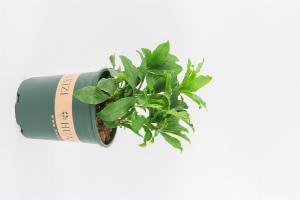Is Pool Water Safe for Plants?
Many people who own swimming pools wonder whether they can use pool water on their plants. Pool water contains chemicals such as chlorine and algaecides, which can potentially harm plants. In this article, we will explore the impact of pool water on plants and provide tips on how to use pool water safely.
Effects of Chlorine on Plants
Chlorine is commonly used to sanitize pool water and prevent the growth of bacteria and viruses that thrive in a wet environment. However, it can also be harmful to plants. Chlorine can cause leaf burn, yellowing, and stunted growth. The level of damage depends on the concentration of chlorine in the water and the sensitivity of the plant.
If you decide to use pool water on your plants, it is important to check the chlorine level first. A safe level of chlorine for plants is between 0.5-1 part per million (ppm). If the level is too high, you can dilute the pool water with tap water until it is within the safe range.
Effects of Algaecides on Plants
Algaecides are chemicals used to prevent the growth of algae in pool water. They can also have a detrimental effect on plants. Some algaecides contain copper, which can accumulate in the soil and cause toxicity to plants. Symptoms of copper toxicity include leaf discoloration, wilting, and death.
To avoid using algaecides on plants, you can take preventative measures to keep your pool free of algae. This includes maintaining proper water chemistry, keeping the pool clean, and using a pool cover to reduce sunlight exposure.
Using Pool Water on Plants
If you want to use pool water on your plants, there are some steps you can take to minimize the risk of damage:
Wait at least 24 hours after adding chemicals to the pool before using the water on plants. This will allow the chemicals to dissipate and reduce the risk of damage.
Avoid using pool water on edible plants such as fruits and vegetables. These plants are more sensitive to chemicals and can absorb them into their tissues.
Use pool water sparingly and only on plants that are not sensitive to chlorine and algaecides.
If possible, collect rainwater to use on your plants instead of pool water. Rainwater is free of chemicals and minerals that can build up in the soil over time.
Conclusion
In conclusion, pool water can potentially harm plants if it contains high levels of chlorine and algaecides. Before using pool water on your plants, it is important to check the chlorine level and wait at least 24 hours after adding chemicals to the pool. If possible, collect rainwater to use on your plants instead. By following these tips, you can keep your plants healthy and thriving while still enjoying your swimming pool.

 how many times do yo...
how many times do yo... how many planted tre...
how many planted tre... how many pine trees ...
how many pine trees ... how many pecan trees...
how many pecan trees... how many plants comp...
how many plants comp... how many plants can ...
how many plants can ... how many plants and ...
how many plants and ... how many pepper plan...
how many pepper plan...































